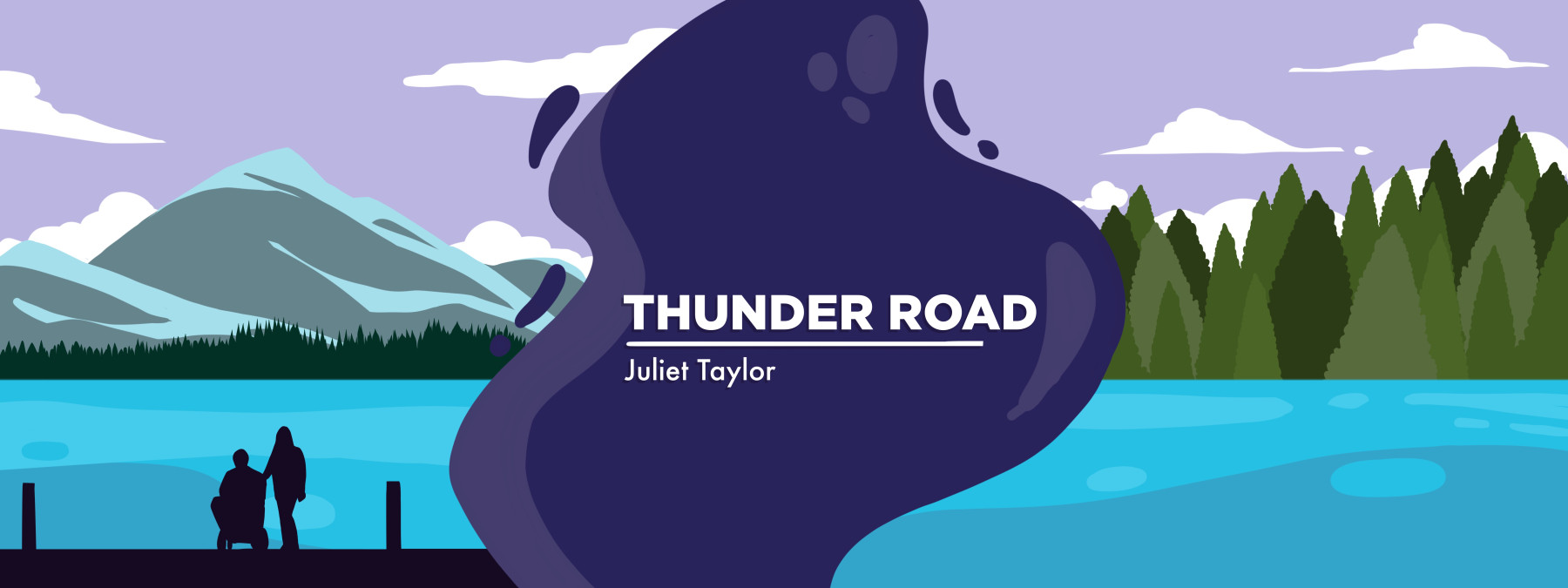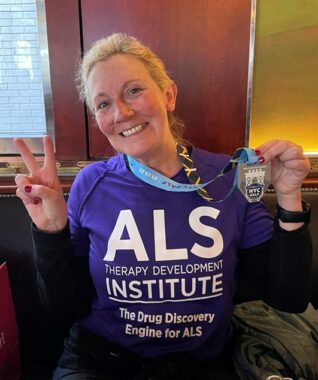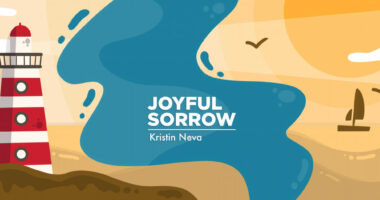Running on faith: How embracing a challenge gave me perspective
Taking on a half-marathon, with all my experiences of ALS to inspire me

On a bitterly cold morning in New York last weekend, I woke before the sun and walked through the empty city streets to the Times Square subway station. From there, I caught a train to Brooklyn, the starting line for the United Airlines NYC Half, where more than 24,000 other participants awaited the start of the half-marathon race.
I’m not a natural runner. In the subway car, I felt intimidated, quietly checking out the other participants headed to Brooklyn. What were they wearing for this weather? What kind of shoes did they have? The closer the train got to our stop, the more my brain tried to convince myself I was out of place.
I quieted my thoughts and kept riding.
My late husband, Jeff, had been the athlete of the two of us. Before his ALS diagnosis, he’d been an accomplished cyclist, a physically strong man who’d enjoyed pushing his physical limits and reaping the physical and emotional rewards of exercise. We once joined a gym together and developed an easy competitiveness with each other, our workouts becoming another way to bond in our relationship.
Living with ALS and caregiving had taken this away from both of us. Jeff worked to offset his waning physical ability with mental ingenuity, devising new solutions for accomplishing tasks that had required force. We both despaired about his growing paralysis, changing him from someone who’d built retaining walls and treehouses into a person who couldn’t move his arms and legs. It was among the most cruel aspects of his illness.
As for me, caregiving had shifted me into a hyperfocus on Jeff’s well-being. As much as I loved hiking and riding my horse as means to stay active, there simply wasn’t time, and these passions became more distant priorities. After Jeff died, grief and the realities of COVID-19 quarantine kept me sedentary for many months, and my body and mindset reflected it.
About a year after Jeff died, I rejoined a gym, this time going it alone — no Jeff to compete with or motivate me to join him when I didn’t feel like working out. The contrast was stark, providing yet another reflection of how much ALS had taken from him and us.
With the encouragement and guidance of an empathetic and motivating trainer who understood the emotional benefits of physical health, I began to work my way back toward greater physical activity, a process that’s been rewarding.
I reflected on these rewards on race morning as frostbite settled in my toes while I waited for the start. I leaned against a parked car and wrapped my legs and feet in a heat sheet, a small foil tarp that runners use to conserve body heat.
I thought about my reasons for running. I glanced at the bright purple shirt I was wearing, representing the ALS Therapy Development Institute (ALS TDI). At the dinner the evening before the race, the 10 of us who’d signed on to run in support of ALS TDI had shared our connections to the disease and our reasons for running: too familiar tales of lost parents, spouses, and best friends.
Our hosts from ALS TDI, who’d encouraged and supported our training and fundraising, shared their gratitude, along with some touching stories about their own mission as the drug discovery engine for ALS. I learned how their scientists are so committed that sometimes they’ll spend the night at work, how the walls of their lab are lined with photos of people affected by ALS. They shared how much they enjoy visitors and the chance to show people around the Boston-area lab, and I’ve subsequently committed to visiting this year and learning more about their work.
As my toes thawed, I made my way to the starting line, slowly feeling excitement and adrenaline pushing out my self-doubt. I reminded myself of what I’d written in Sharpie on the back of my shirt: I run for Jeff. Mary Ann. Juan. Shelly. Tim. Sandy. Brian. Gil. And many other names of people I love who are living with ALS.
The most beautiful moment of the race, aside from the finish line, was cresting the Manhattan Bridge as I crossed from Brooklyn to Manhattan. I could see One World Trade Center to my left, and the city skyline to my right. At that precise moment, “Auld Lang Syne” — a song about relationships and remembrance — began to play on my earphones.
I’m not a natural runner, but I am a person living with the impact of ALS who’s taking an opportunity to raise awareness of this devastating disease and the permanent effects it has on families, friends, and communities. My purple shirt, my END ALS license plate, the chance to write this column — all of it is a way to help and heal.

Juliet Taylor displays her medal after completing the United Airlines NYC Half race this month. (Courtesy of Juliet Taylor)
Note: ALS News Today is strictly a news and information website about the disease. It does not provide medical advice, diagnosis, or treatment. This content is not intended to be a substitute for professional medical advice, diagnosis, or treatment. Always seek the advice of your physician or other qualified health provider with any questions you may have regarding a medical condition. Never disregard professional medical advice or delay in seeking it because of something you have read on this website. The opinions expressed in this column are not those of ALS News Today or its parent company, Bionews, and are intended to spark discussion about issues pertaining to ALS.








Christine
I am hoping my husband will find purpose and activities when I am gone. It doesn’t seem long ago when we we t on long hikes in the woods. Your column let me see past our current struggles when he can find his way back to life.